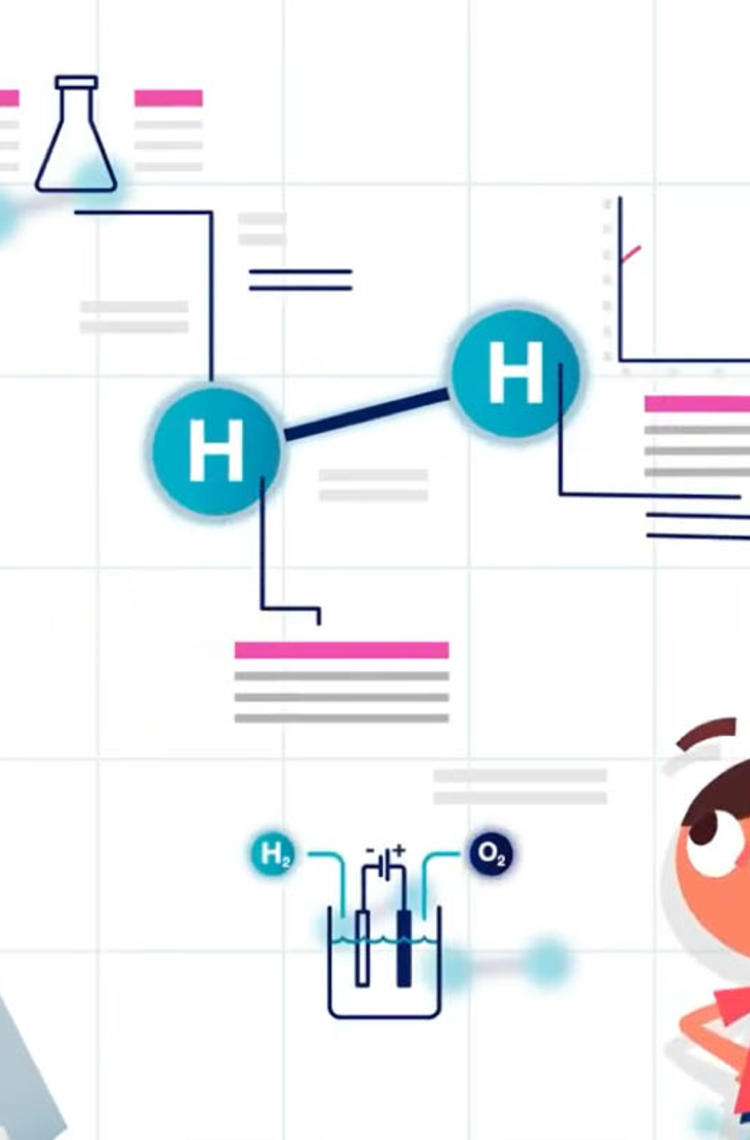Building on its “Future of the Skies” educational content series, the Airbus Foundation Discovery Space is tackling a new topic to inspire youth: hydrogen for planet-friendly air travel. This latest chapter introduces kids to the element at the very top of the periodic table and how it could play a key role in powering future aircraft.
Science and technology at the service of society
When today’s kids come of age, our skies will look a lot different. For one thing, they may be filled with a multitude of planes that soar to new heights without any emissions. And the new fuels and technologies that could power them – from fuels made of algae and waste to hydrogen – are already in the works.
But what is hydrogen and how can engineers use it to power future airplanes? And how can these complex concepts be explained so that even kids can understand them?
The Airbus Foundation’s Discovery Space programme has set its sights on addressing those very questions with “Flightpath to Hydrogen,” the latest chapter of the “Future of the Skies” content series aimed at kids aged 8 to 12 years old. It includes the following:
- Four animations that explain key topics using characters kids have already met from previous editions
- Do-it-yourself toolkits
“Our aim is to capture kids’ imagination with content that is not only fun, but also educational and inspiring,” says Rachel Schroeder, Managing Director of the Airbus Foundation. “This chapter is particularly special as it really highlights how science and engineering can address today’s critical challenges, like climate change.”
“Flightpath to Hydrogen”: a future-focused series
Hydrogen is the undisputed star of this chapter of the content series. And for good reason: this high-potential energy carrier promises to eliminate aircraft’s CO₂ emissions while significantly reducing other climate-impact emissions. But many things will need to change to enable hydrogen to fuel future aircraft, from engine technology to transport and storage at airports. Kids thus have many starting points from which to let their imaginations run wild!
Each of the four episodes explains a key topic and inspires kids to think critically about them. These topics include the following:
- Future Fuels: The first episode explains the challenges of today’s fuel for aircraft and outlines why alternative options are needed for the betterment of our planet. Kids are then challenged to think about what will power future airplanes.
- All about Hydrogen: This episode deciphers hydrogen, the molecule kids are in contact with everyday but may not even know it. They are then prompted to think about where they can find hydrogen around them.
- Hydrogen as Fuel: This episode highlights how hydrogen has already been used in a variety of ways in the past and how it could be used in the future to fuel aircraft. Kids are then asked to imagine where they would like to go in a future hydrogen airplane.
- Hydrogen Airplanes and Infrastructure: This final episode outlines all of the many aspects about aircraft and airports that will need to change to make way for hydrogen. Kids are then motivated to think about what a future airplane could look like.
"This chapter is particularly special as it really highlights how science and engineering can address today’s critical challenges, like climate change.”
Rachel Schroeder, Managing Director, Airbus Foundation
Custom content for educators and parents
Since 2018, the Discovery Space programme has acted as a science education partner to help educators arents engage with their children and students on STEM topics.
“Our first priority is to make the Discovery Space content relevant to kids,” Rachel says. “But we fully recognise that educators and parents play a key role in bringing content to their students and children, so we work closely with them to make sure the subject matter is tailored to their needs as well.”
For educators, the “Flightpath to Hydrogen” series can help them breathe new life into science classes dedicated to explaining hydrogen as a molecule, as well as basic engineering concepts. It can also help them nurture their students’ understanding of STEM concepts and practices.
For parents, the series can offer an educational after-school activity or a fun family night game. It can also help spark family discussions on how science and technology can lead to satisfying and meaningful careers in the future, as kids start to think about how they can put their talent and imaginations to protect our planet.
All of the content included in the series is produced in four core languages: English, French, German and Spanish. The animations will be progressively shared on the Discovery Space’s social media channels, from YouTube to Twitter.
